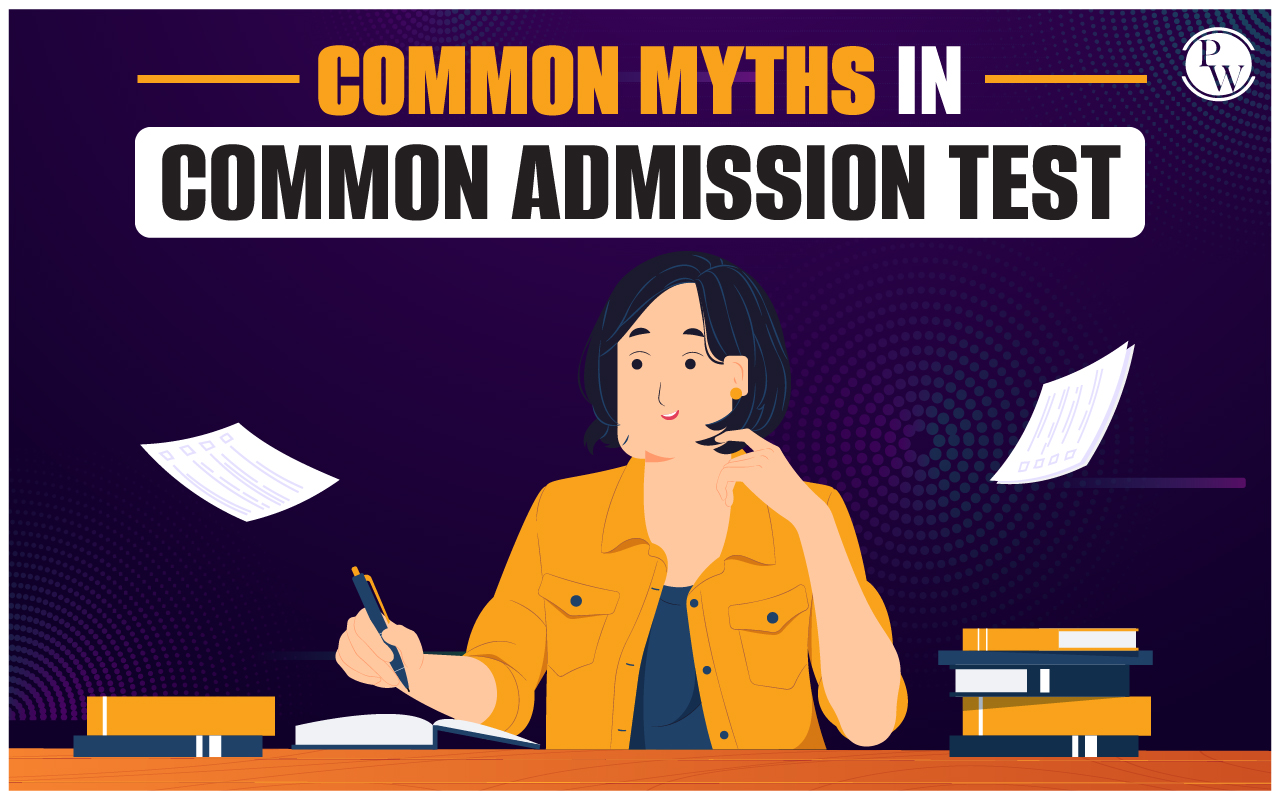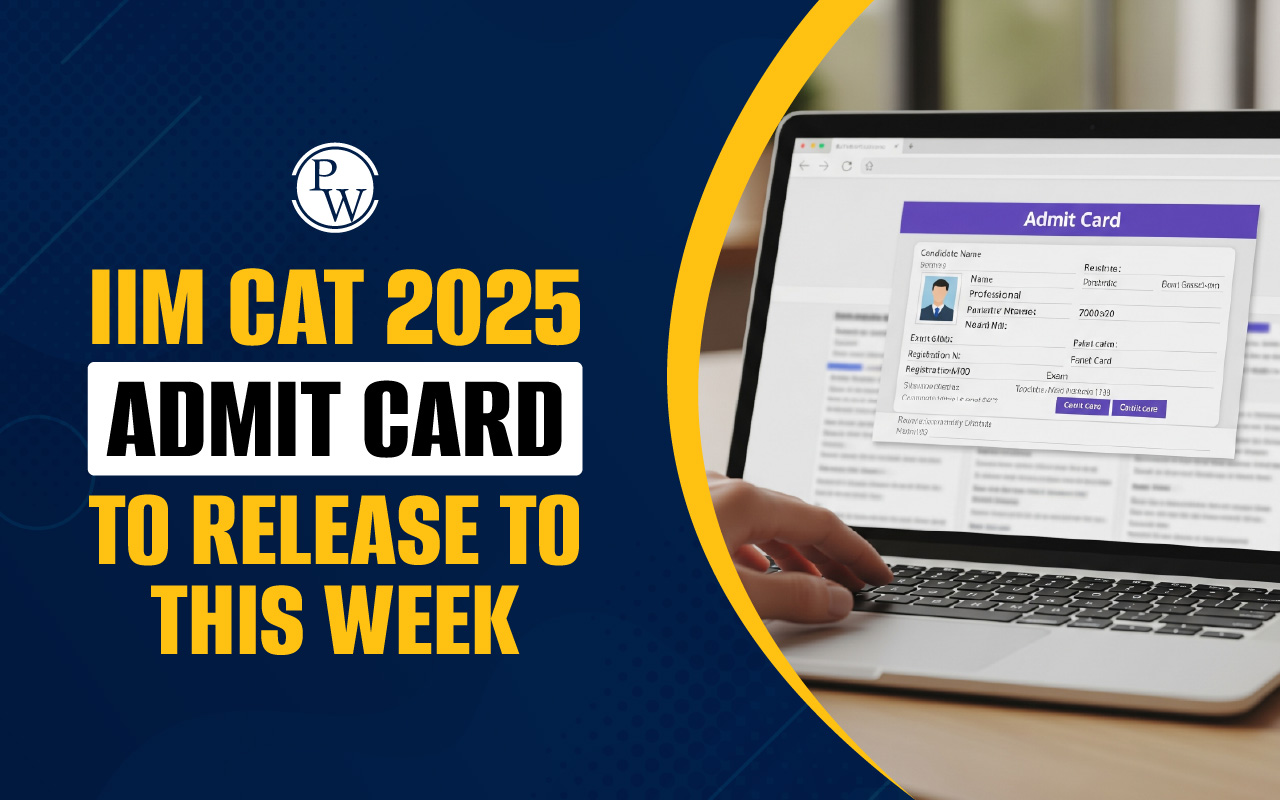

First-time CAT exam takers may experience anxiety as this career-defining entrance test holds significant importance. Throughout their CAT preparation journey, they encounter numerous challenges and uncertainties that sometimes lead to self-doubt and exam apprehension.
Statements like "CAT is exclusively for Engineering students," "CAT coaching guarantees success," "Candidates with high IQ are the only ones suited for CAT," "Lack of math skills means CAT failure," "CAT is particularly challenging for female candidates," and "CAT equals entry to IIMs" are commonly heard. It's crucial not to be disheartened by such comments because CAT is far from being an insurmountable obstacle. With the CAT 2022 exam preparation now in its final stages, many of you are gearing up for the November 27th test date. There's no need for excessive worry. Rather than viewing CAT as an intimidating exam or a "make or break" moment, approach it with confidence in your abilities, treating it as just another assessment. In the following, we debunk prevalent myths associated with the CAT exam.Myth 1: CAT has high difficulty level
This represents one of the prevailing misconceptions linked with the CAT exam. While it is undeniably more challenging than many other MBA entrance exams , it never reaches the status of being exceptionally difficult. Throughout its history, CAT has consistently maintained a difficulty level categorized as 'moderate to high.' In fact, it has progressively moderated the level of difficulty to promote a broader representation of students from diverse academic backgrounds and to make it more accessible to non-Engineering candidates. To successfully conquer the CAT exam, all that's required is a well-structured preparation plan spanning over six months, with a daily study routine ranging from 4 to 8 hours.
To successfully conquer the CAT exam, all that's required is a well-structured preparation plan spanning over six months, with a daily study routine ranging from 4 to 8 hours.
Myth 2: CAT requires strong mathematical skills
CAT's Quantitative Aptitude section primarily revolves around grasping the core principles. Your prior Mathematics score, whether in the 90s or not, during CAT preparation, is not a pivotal factor. Quantitative Aptitude topics essentially build upon the foundational mathematics studied in Class 9 and 10, which most of us are already familiar with. The crucial aspect is to leverage your comprehension of these fundamental concepts and acquire the skill to apply them in various contexts. Dedicate yourself to consistent and diligent effort. If your mathematical proficiency is not robust at the outset of CAT preparation, it will certainly strengthen by the time the exam date approaches. Perseverance and continuous practice are key.Myth 3: CAT is easier for students from Engineering background
CAT is an aptitude examination that places a premium on robust logical and analytical capabilities. It is open to anyone possessing these skills or those willing to cultivate them, regardless of their educational background. Interestingly, individuals with an Engineering background have often found the VARC (Verbal Ability and Reading Comprehension) section to be challenging. Many Engineering graduates who have successfully navigated the CAT in the past can attest to facing difficulties in the VARC section due to weaknesses in English comprehension and grammar. In essence, CAT proves challenging for those whose foundational knowledge in the relevant subjects is not firm. Also Read: CAT 2023 Verbal Ability PreparationMyth 4: Female candidates score low in CAT
This misconception arises from the gender stereotypes associated with the ongoing debate between engineering and non-engineering career paths. The reality, however, is that for a significant number of male students, combining Engineering with an MBA represents a commonly chosen and secure career route. In contrast, female students have a wide array of popular career options to explore after their undergraduate studies. This disparity in career choices contributes to a lower female participation rate in the CAT exam compared to their male counterparts. Nonetheless, in recent years, there has been a noticeable and consistent growth in the number of female CAT applicants, resulting in an increased presence of women in MBA classrooms.Myth 5: CAT = IIMs
CAT is commonly associated with the Indian Institute of Management (IIMs); however, this perception is not entirely accurate. While the CAT score is indeed accepted by the IIMs, it extends its reach to more than 1200 B-Schools across India. These institutions include prestigious names like MDI-Gurgaon, FMS-Delhi, SPJIMR-Mumbai, IMT-Ghaziabad, and others.Also Read: How to Prepare for Data Interpretation for Cat 2023
It's important to note that achieving a high CAT score does not automatically guarantee admission to IIMs. These institutions place significant emphasis on evaluating candidates' academic backgrounds and work experiences as part of the admission process. Therefore, if you perform well in CAT 2022, you will have a variety of excellent MBA colleges to consider for your education.Myth 6: You can’t crack the CAT without coaching
The necessity of enrolling in coaching institutes is no longer absolute. The landscape has evolved. While coaching centers certainly offer valuable guidance and study materials, it's entirely possible to prepare for the CAT independently. In fact, numerous CAT toppers from recent years have pursued self-study approaches. Utilize online study resources and freely available tutorials. Participate in study groups found on platforms like Facebook, YouTube, Telegram, and WhatsApp, as they can be immensely beneficial.Also Read: How To Prepare for MAT 2024 in 6 Months
Myth 7: Experienced candidates are given more preference during selection
You have the flexibility to pursue an MBA or PGDM immediately after completing your undergraduate degree or after taking a hiatus of a few years. The decision is entirely yours to make. If you wish to explore your interests, gain practical work experience, or take a break of two to three years after graduation, you have that option. You can choose to take the CAT exam when you feel adequately prepared to embark on your MBA journey.- It's worth noting that the IIMs offer the provision of deferring admission by a year for candidates who have been shortlisted. These candidates can opt to join the IIM after a year if it aligns better with their plans. Furthermore, candidates with work experience receive additional consideration during the MBA admission selection process. This ensures that each institute maintains a well-balanced class composition, comprising both recent graduates and individuals with work experience.
Myth 8: Walk on the footsteps of a CAT topper
Emulate the top performer" is a prevailing misconception. It's essential to avoid mimicking others. While seeking advice and tips from CAT toppers is beneficial, it's crucial to develop a study plan tailored to your unique needs. Much like how no two individuals share the same DNA, no two MBA aspirants can thrive with identical preparation strategies. You can certainly draw inspiration from their preparation approaches and refine your own accordingly.Myth 9: The number of questions decides the score
No, the significance lies in the precision of your responses rather than the quantity of answers in CAT. This is because CAT employs negative marking for incorrect responses. Therefore, if you try to answer all questions but most of them are incorrect, you will incur a substantial deduction in marks. Conversely, if you solve a select number of questions with precision, your score will reflect your accuracy. It's essential to aim for accuracy in approximately two-thirds of the total questions in each section of the CAT to secure a favorable percentile.Myth 10: It's better to skip TITA questions in the exam
Don't be swayed by this misconception. Some may advise you to avoid TITA (Type In The Answer) questions because the absence of multiple-choice options can make it challenging to guarantee the correctness of your response. However, it's crucial to remember that even if your TITA answer is incorrect, you won't face any deductions, as CAT doesn't employ negative marking for these questions. So, don't hesitate to attempt them; you might just succeed in solving them accurately.Common Myths in CAT FAQs
Is it true that coaching institutes are the only way to succeed in the Common Admission Test (CAT)?
No, it's not true. While coaching institutes can provide guidance and study materials, many candidates successfully prepare for CAT through self-study, online resources, and study groups.
Does CAT primarily benefit engineering students, and is it exceptionally tough for non-engineering backgrounds?
CAT is open to candidates from all educational backgrounds. It has evolved to accommodate a diverse range of students, and success is determined by aptitude and preparation, not academic history.
Are the number of questions attempted more important than their accuracy in CAT?
Accuracy is crucial in CAT as it employs negative marking for wrong answers. It's better to focus on solving questions accurately rather than attempting a large quantity.
Do TITA (Type In The Answer) questions in CAT have negative marking if answered incorrectly?
No, TITA questions do not have negative marking. You can attempt them without fear of losing marks, so it's advisable to give them a try.
Should I delay my MBA aspirations if I lack work experience?
No, work experience is a valuable factor but not mandatory for CAT or MBA admission. Many institutions seek a mix of fresh graduates and experienced candidates, so consider your own career goals and timeline when deciding when to pursue your MBA.
🔥 Trending Blogs
Talk to a counsellorHave doubts? Our support team will be happy to assist you!

Free Learning Resources
PW Books
Notes (Class 10-12)
PW Study Materials
Notes (Class 6-9)
Ncert Solutions
Govt Exams
Class 6th to 12th Online Courses
Govt Job Exams Courses
UPSC Coaching
Defence Exam Coaching
Gate Exam Coaching
Other Exams
Know about Physics Wallah
Physics Wallah is an Indian edtech platform that provides accessible & comprehensive learning experiences to students from Class 6th to postgraduate level. We also provide extensive NCERT solutions, sample paper, NEET, JEE Mains, BITSAT previous year papers & more such resources to students. Physics Wallah also caters to over 3.5 million registered students and over 78 lakh+ Youtube subscribers with 4.8 rating on its app.
We Stand Out because
We provide students with intensive courses with India’s qualified & experienced faculties & mentors. PW strives to make the learning experience comprehensive and accessible for students of all sections of society. We believe in empowering every single student who couldn't dream of a good career in engineering and medical field earlier.
Our Key Focus Areas
Physics Wallah's main focus is to make the learning experience as economical as possible for all students. With our affordable courses like Lakshya, Udaan and Arjuna and many others, we have been able to provide a platform for lakhs of aspirants. From providing Chemistry, Maths, Physics formula to giving e-books of eminent authors like RD Sharma, RS Aggarwal and Lakhmir Singh, PW focuses on every single student's need for preparation.
What Makes Us Different
Physics Wallah strives to develop a comprehensive pedagogical structure for students, where they get a state-of-the-art learning experience with study material and resources. Apart from catering students preparing for JEE Mains and NEET, PW also provides study material for each state board like Uttar Pradesh, Bihar, and others
Copyright © 2025 Physicswallah Limited All rights reserved.
Get App











